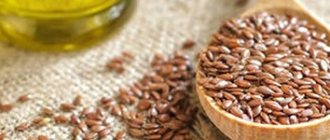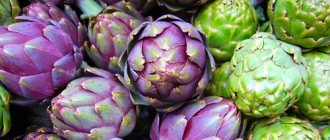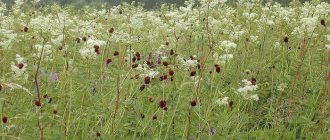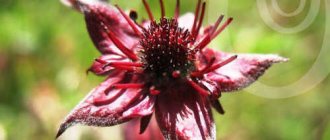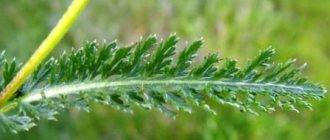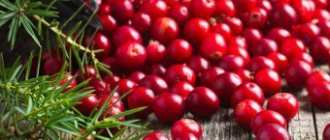The medicinal herb promotes recovery from pneumonia and bronchitis. Decoctions and infusions stimulate appetite, cleanse the blood, and increase the secretion of gastric juice. Thanks to its tannins, verbena helps in the treatment of the gastrointestinal tract. Preparations from the plant reduce temperature, enhance the body's protective functions, and relieve intestinal spasms. Used in the treatment of female diseases.
Pharmacological studies have established the sedative effect of the herb on the parasympathetic nervous system. Medicines with antidepressant properties restore the central nervous system during prolonged stress and nervous exhaustion [5].
In folk medicine, verbena is used to treat inflammation of the throat and oral mucosa and is used as a diuretic and tonic. The leaves of the plant contain 100 mg% vitamin C, which strengthens the immune system and has an anti-scurvy effect. Antiseptic and anti-inflammatory properties are used in the treatment of skin diseases, furunculosis, and non-healing wounds.
Botanical description
The stem is slender, erect, tetrahedral. At the top the stem is branched and each shoot ends in a spike-shaped panicle.
Verbena leaves are opposite (2 leaves per node), coarse in texture. Differ from each other depending on location. The lower leaves are pinnately cut, petiolate, the middle ones are tripartite, the upper ones are sessile, entire. The higher up the stem, the smaller and rounder the leaves.
Verbena flowers are tiny, tubular, with five uneven petals. Light purple, they are collected in spike-shaped inflorescences that develop from the axils of the middle and upper leaves. It blooms from June to September.
Fetus. In autumn, the flowers are replaced by small nuts (4 nuts per flower) up to 2 mm in size. The bolls are elongated and reddish-brown. Verbena officinalis seeds are spread by wind and birds.
Wintering
Recommended by topic
Night violet Peonies Catharanthus
In warm regions of Russia, perennial varieties are left to overwinter in open ground. They are simply covered for the winter with a layer of sawdust, dry leaves or straw.
But in most regions of the country, only Verbena stricta successfully tolerates winter temperatures. Before the onset of winter, its stems are cut close to the root, covered with sawdust and spruce branches. Gardeners grow the remaining varieties either as annual crops or dig them up for the winter.
How to preserve perennial verbena:
- Trim the plant stems. Leave only 1/3 of their height.
- Dig up a bush along with a lump of earth.
- Plant the verbena in a suitable sized container or pot.
- Place it in the cellar, basement or on the balcony. The main thing is that the selected location maintains a constant temperature of 7°C to 9°C.
- Moisten the substrate slightly from time to time.
When the wave of returning spring frosts passes, verbena can be planted in the chosen location.
Many gardeners grow ampel varieties of verbena on balconies and verandas. They are also easy to save for next season.
Over the summer, ampelous verbenas grow luxuriantly, so first of all, their stems should be shortened by 1/2
What to do next:
- Place the plant in a bright room with a temperature of no more than 10°C-15°C.
- Regularly shorten growing shoots, remove inflorescences that verbena tries to set.
- Water moderately and periodically.
- In the last days of February, shorten the main trunks to the maximum level.
- Replant in a new pot or replace the soil in the old container.
Question to the expert
Is it necessary to replant a hanging plant or completely change the soil in the pot?
Not necessary. You can get by with partial replacement of the substrate or alternating fertilizing. Before the start of active growing season, add a little urea or other nitrogenous fertilizer to the soil. And during the flowering period, pamper the beauty with phosphorus-potassium supplements.
Where does it grow?
There is no exact information about the origin of verbena. Many are inclined to consider Europe to be the birthplace of this ancient plant. For many places, verbena is invasive - it has a high ability to quickly adapt to new conditions. In meadows, fields, pastures, in abandoned places, on dry river banks, near ruins, medicinal verbena grows everywhere - wild plants are extremely unpretentious. It only does not tolerate severe frosts. Loves sun, warmth and slightly moist soil.
It is found from the Mediterranean Sea to Japan and China, in Russia - from the Urals to the Caucasus. The main condition is a temperate or tropical climate.
Bibliography
- O.Yu. Kulyak, G.V. Adamov. “Verbena officinalis. Review of phytochemical and pharmacological research."
- R.M. Khaitov, B.V. Pinegin. "Immunomodulators: mechanism of action and clinical applications." Institute of Immunology, Ministry of Health of the Russian Federation, Moscow.
- A.T. Podolyak. “Description of 300 medicinal plants and methods of their use for common diseases”, Istok Publishing House, 2015.
- Antiinflammatory activity and chemical composition of extracts of Verbena officinalis. M Deepak, S S Handa.
- Antioxidant effect of lemon verbena extracts in lymphocytes of university students performing aerobic training program. L Carrera-Quintanar, L Funes, E Viudes, J Tur, V Micol, E Roche, A Pons.
Chemical composition
Active ingredients of verbena officinalis:
- iridoids, simply put, bitters (aucuban, loganin, verbenaline, gastatoside);
- a large number of flavonoids (apigenin, scutellarein, luteolin);
- phenolic acid derivatives (verbascoside);
- alkaloids (adenosine);
- citral;
- ursolic acid;
- caffeic acid;
- beta-carotene;
- tannins;
- saponins;
- minerals, macro- and microelements (potassium, phosphorus, calcium, magnesium, zinc);
- essential oils.
Growing verbena from seeds
Stratification
As a rule, verbena is easily propagated by seed. However, in some species the surface of the seeds is protected by a high-density shell, which makes their germination difficult. In this case, the seed material must be stratified, or rather, exposed to low temperatures.
The stratification procedure is quite simple. Seeds are laid out on a moistened cloth, then they are placed in an opaque polyethylene bag. Next, they are removed for 4 or 5 days on the refrigerator shelf intended for vegetables.
Sowing seedlings
After the seed material has undergone stratification, it can be sown directly into open ground. However, most gardeners grow verbena through seedlings, as this method is distinguished by its reliability.
On average, the seed material of this plant retains high germination rate for 3–5 years, but there are species with a lower rate. For example, the germination rate of hybrid verbena seeds is no more than 30 percent. In this regard, when sowing seeds, it is necessary to take this into account.
Seeds are sown for seedlings in March. To do this, the seedling box needs to be filled with humus-light soil, either perlite or sand. Distribute the seeds evenly over the surface of the substrate and cover them with a thin layer of humus on top. The crops are covered with glass or film on top and removed to a place where the temperature is kept at 18–20 degrees. Do not forget to regularly remove condensation from the shelter and ventilate the crops. The seeds of such a plant are characterized by gradual germination, with the first shoots appearing after 3–4 weeks. Once this happens, move the crops to a location that is slightly cooler.
Seedling care
Grown seedlings must be watered in a timely manner; to do this, they are moistened with a spray bottle immediately after the top layer of the soil mixture has dried. 30 days after the plants have formed 2 pairs of true leaf blades, they should be picked into cellular containers or individual small containers. When the flowers adapt to a new place (after about 15 days), fertilize them using a mineral complex.
In order for the bushes of ampelous varieties to be more lush, the tips of the shoots should be pinched over a 5-6 leaf plate. In low-growing varieties, pinching is not carried out, because the bushes already grow lush.
Use in folk medicine
Despite the fact that verbena is endowed with too many magical and symbolic meanings, its therapeutic effectiveness is confirmed by extensive scientific research. Hippocrates also recommended it for the treatment of infertility.
The beneficial properties of verbena were noted by Hildegard of Bingen (St. Hildegard), a German nun, author of works on medicine, who lived in the 12th century. She extolled the virtues of bitter aromas.
The medicinal properties of the herb Verbena officinalis have been known to people for a long time, because its use for medicinal purposes dates back a thousand years. Unlike the intuitive experience of traditional healers, science meticulously studies the composition of each plant. Verbena officinalis, the use of which in folk medicine was previously limited to a narrow list of diseases, today is one of the most powerful medicinal herbs. And the list of ailments it treats has expanded significantly.
Atherosclerosis
Verbena perfectly cleanses blood vessels from low-density cholesterol plaques. Blood circulation is significantly improved and the risk of cardiovascular diseases is reduced.
Insomnia
Verbena herb has a mild sedative effect and is indicated for people suffering from insomnia. Research has shown that the sleep-inducing compound in verbena is verbenaline.
Cough
The components of this herb have secretolytic and expectorant properties and promote mucus production. They loosen phlegm, relieve congestion and soothe pain when coughing. Moreover, citral kills bacteria located on the mucous membrane of the respiratory tract.
Skin diseases
Tissue restoration is a complex process that can be caused by various factors. Apigenin and other flavonoids present in verbena extract have powerful anti-inflammatory properties. The tincture and decoction are used externally for purulent, infectious and allergic skin diseases - rashes, acne, scabies, ulcers, eczema, neurodermatitis, psoriasis, furunculosis, as well as difficult-to-heal wounds.
Migraine
Thanks to the main active component - a glycoside with a calming effect, discomfort caused by severe headaches and migraines is suppressed.
Menstrual irregularities
Amenorrhea, dysmenorrhea, premenstrual syndrome and menopausal mood swings have long been treated with this feminine herb. “The seventh herb of Venus” is one of the many “talking” names of verbena.
Colds and flu
Treatment of infectious diseases is becoming a growing challenge as pathogens rapidly become resistant to existing antibiotics. The antimicrobial potential of verbena stems, leaves and roots against 24 strains of gram-positive and gram-negative bacteria was studied. The stems were the most potent against all strains. Their activity against Staphylococcus aureus and Pseudomonas aeruginosa was higher than that of the antibiotic amoxicillin.
Fatigue and nervous tension
The use of verbena officinalis for fatigue relaxes the nervous system, reduces the level of stress hormones, and prevents symptoms of anxiety and depression.
Cystitis, urethritis, gout
Due to its diuretic properties, verbena herb is used as a remedy for fluid stagnation in the body and gout. The arbutin it contains acts as an antibacterial agent against cystitis and urethritis.
Stomach upset, heartburn
The herb Verbena officinalis stimulates the secretion of gastric juice, especially bile, which leads to better absorption of food. This beneficial effect on the digestive tract is explained by the presence of bitter glycosides in it.
Lactation, sexual dysfunction
Verbena increases milk production in a nursing mother. This plant is also a powerful natural aphrodisiac.
Alzheimer's disease
When studying aqueous extracts of Verbena officinalis, it turned out that the components of the plant have a neuroprotective effect. This can slow down the progression of the disease and protect neurons from damage.
Beneficial features
Verbena is used to reduce temperature during fever, relieve muscle spasms, and increase the secretion of sweat and bile.
When using medicines from the plant, the healing process of skin lesions is accelerated. They treat gum inflammation and eliminate bad breath.
The medicinal plant is also used for the treatment of various neurological and mental conditions, including stress, nervous disorders, strong emotional experiences and tension, increased fatigue, depression, insomnia and loss of strength.
One of the main beneficial properties of verbena is considered to be anti-atherosclerotic. It is due to the fact that the plant has the following actions:
- Strengthens the walls of veins and arteries;
- Improves microcirculation;
- Normalizes vascular tone and increases their elasticity;
- Restores damaged capillaries;
- Reduces cholesterol levels.
The use of verbena helps eliminate many female pathologies, including symptoms of premenstrual syndrome, menopause, menstrual irregularities and the genitourinary system. The plant is also recommended for men to normalize sexual function.
Verbena tea
Traditionally, verbena is used as a medicinal tea. Despite the numerous beneficial properties of verbena tea, the aroma and bitter taste of this drink require some getting used to.
Simple to prepare but effective, verbena tea is prepared by steeping two tablespoons of raw tea in 250 ml of boiling water. Pour boiling water over the herb, leave for 5-7 minutes, filter and drink after meals to improve digestion, and before bed to combat insomnia. Tea with verbena, drunk in the morning, improves mood, calms nerves, and balances mood swings.
Scientists suspect that in combination with other herbs the strength of the active ingredients of verbena is enhanced or the components of other plants are activated. This is not a new, but still unexplored phenomenon in herbal medicine. So combine verbena with other herbs more often.
Possible harm and contraindications
However, we should not forget that any plant or product, even the most useful, has contraindications, and if abused or misused, they can cause serious harm to the body.
First of all, people who are prone to allergies should be careful - for them, using verbena decoctions can end sadly.
Verbena tea should not be given to young children under the age of 12-14 years, as they are also at high risk of an allergic reaction.
Women during pregnancy and lactation should avoid using the plant.
Due to its properties, verbena can affect blood pressure, so people with hypertension and heart disease should use verbena teas and infusions with caution.
Attention!
Even in the absence of allergies or heart problems, you should not self-medicate - it is best to consult your doctor before using verbena.
Verbena tincture
The advantage of alcohol tinctures is that they are absorbed into the blood faster and act immediately. To prepare the tincture, pour 50 g of herb into 500 ml of vodka. Soak for 3 weeks in a dark place. Strain and store in a dark glass bottle. Take 1 teaspoon three times a day before meals.
- Verbena tincture has a diaphoretic, antipyretic, and tonic effect.
- The tincture can be used for compresses for bruises and sprains.
- Verbena tincture is used for blood vessels: to cleanse them of deposits on the walls.
Indications for use
The use of verbena is effective in the presence of the following diseases:
- acute respiratory infections;
- Bronchitis;
- Laryngitis;
- Hepatitis;
- Tracheitis;
- Pneumonia;
- Cholecystitis;
- Gastritis, accompanied by low gastric juice;
- Cholelithiasis;
- Hypotension;
- Headache and toothache.
Since verbena cleanses blood vessels from cholesterol plaques and improves blood circulation, the plant is indicated for the following pathologies:
- Thrombosis;
- Thrombophlebitis;
- Ischemic disease;
- Phlebeurysm;
- Gout;
- Atherosclerosis;
- Rheumatism;
- Angina;
- Peripheral circulation disorders.
External use of verbena is indicated for various skin diseases, eczema, ulcers, scabies, furunculosis, rashes and difficult-to-heal wounds.
Verbena essential oil
Once extracted, high quality verbena oil has a chemical composition that combines several powerful antioxidant components such as nerol, citral and verbascoside. Like other essential oils, it is extracted from the leaves of the plant through steam distillation.
For massage
- Apply 2-3 drops of verbena oil to your temples and massage. This will soothe headaches and improve sleep.
- Massaging the abdominal area will relieve anxiety and improve digestion.
- Massage with verbena oil of the chest, in particular the area of the thymus gland, relieves fatigue, improves immunity, and fights allergies.
For Bath
Dissolve 5 drops of essential oil and a handful of coarse salt in a bath of water. It helps fight rheumatic pain and muscle spasms.
Contraindications for use
Like other medicinal plants, verbena has some contraindications for use. These include:
- Pregnancy - the use of verbena can provoke an increase in uterine tone.
- Stomach diseases with low acidity.
- Cholelithiasis.
- Children under 14 years of age.
In addition, the individual characteristics of the body and the possibility of developing an allergic reaction should be taken into account. To ensure that the medicine does not cause harm to health, you can take it only under the supervision of a doctor.
Application in cosmetology
Verbena is valued in cosmetology for its regenerating and antiseptic properties for the face and body. It can remove toxins, fight oily skin, prevent the formation of stretch marks and counteract cellulite.
The cosmetic industry produces alcohol-glycerin extract of verbena, which restores skin tone and elasticity, cleanses pores, and removes age spots.
You can also prepare a beauty product from verbena at home.
3-4 tbsp. Fill spoons of herbs with water (500 ml) and put on fire. Bring to a boil and cook for 3 minutes. Cool and strain. After a shower, gradually pour the verbena decoction over yourself, starting from your head: first onto clean hair, then onto your body. There is no need to wipe yourself off after this.
This procedure has both a cosmetic and therapeutic effect.
Care
Maintenance does not require too much effort.
- Watering . It is necessary to regularly supply the plant with water and not allow the substrate to dry out. It is better to place it in a sunny, warm place, which is best for these plants. Proper care requires regular watering, especially during periods of prolonged drought. The soil in which the plant is grown should not be dried out or flooded. Drought and excess humidity negatively affect the development of verbena. Therefore, verbena planted in pots must additionally be provided with proper drainage.
- Fertilizer . Proper fertilizer is necessary, especially during flowering. Multi-component fertilizers are ideal.
- Trimming . It is worth taking care to regularly remove faded inflorescences and dry stems, which affects longer flowering and good propagation of the plant.
Verbena in landscape design, photo
Verbena officinalis – pharmaceutical preparations
Verbena officinalis can be bought at a pharmacy. Both the herb itself and preparations based on it are available for sale. It is often included in various herbal preparations.
The dietary supplement “Verbena Clean Vessels” is available in the form of capsules that are convenient for use.
Another pharmaceutical preparation based on verbena is an alcohol tincture of the herb with a detailed application diagram.
Verbena essential oil is sold in pharmacies for rubbing, compresses, massage, baths, aromatherapy and enrichment of cosmetic products.
Reproduction methods
Of course, already grown verbena bushes appear on sale every spring. But if you want to propagate your favorite variety, grow something special, or just have fun? Then you should give up on the little troubles and fulfill your desire yourself.
Growing seedlings
Recommended by topic
Astilbe Lavender Carnation
To sow, you must have at your disposal seed material no older than 2 or 3 years. From the fourth and fifth years, seed germination drops by 70%.
Usually, sowing begins on the 20th of March, because verbena needs at least 8 weeks to develop from a small sprout into a plant with buds. In general, the process of growing seedlings includes the stage of preparation, sowing, growing seedlings and picking.
Preparation consists of stratification. It helps to increase the resistance of plants to adverse weather conditions, to make the seed coat more fragile, precisely the kind that young shoots are able to destroy.
How to stratify:
- Dilute potassium permanganate in a small container. The solution should have a pale pink color.
- Place seeds of one variety in a container for 30 minutes.
- Fish out and discard any floating seeds.
- Prepare small squares of thin cotton fabric or fold a medical bandage several times.
- Strain the seeds through a cloth and wrap it in it.
- Place the bundles in a container without a lid and refrigerate for 5 days.
- Take out the container with fabric bags and place in a warm place.
- Keep the seeds in a warm place for 3 days, periodically moisten the bags with a spray bottle.
This preparation provides another nice bonus. If unstratified seeds give unfriendly shoots only after 2 or 3 weeks, then stratified ones only after 5 or 7 days.
How to sow verbena seeds:
- Prepare the soil. Buy universal soil for indoor plants or create a soil mixture yourself from garden soil, rotted compost, coarse river sand or perlite and peat in equal proportions.
- Freeze the soil for 3 days in the freezer, steam or bake in the oven.
- Fill a plastic container with substrate.
- Lightly compact the soil with a spatula.
- Make furrows 0.5 cm deep on the soil surface.
- Place the seeds in the grooves.
Do not sprinkle the seed material with soil, otherwise weak shoots will not be able to break through it.
- Moisten the substrate well with lukewarm, settled water using a spray bottle.
- Cover the container with a moisture-saving lid, glass or plastic bag.
- Place the greenhouse in a shaded place with a temperature of 20°C to 25°C.
- When shoots appear, move the container to a well-lit place with a temperature of 18°C to 20°C.
Moisten the soil as the top layer dries, periodically ventilate the plantings, and fertilize with a complex preparation every two weeks. As the seedlings grow, increase the time the plantings are left without shelter by 2-3 hours, and after 4 days remove it completely.
As soon as young verbenas have 3-4 pairs of adult leaves, plant them in individual containers.
Moisten the substrate and let the water soak in for about 20 minutes. Then use a flat wooden stick or a teaspoon to pry up the earthen ball, divide the root system of small plants, and then plant each one in a hole in the center of a small pot
The weakest verbenas can be fed with nitrogen, but you should not overdo it. Excessive nitrogen content will slow down the onset of the flowering phase or simply disrupt it.
Should verbenas be pinched? Preferably. This is equally necessary for ampelous and tall varieties, but they can also benefit the rest. After all, thanks to pinching, the plants form strong bushes and bloom more luxuriantly.
All you need to do is cut off the top above level 5 of an adult leaf
And, yes, the procedure has one drawback. Pinching delays the onset of flowering by 1.5 or 2 weeks. Therefore, one half of the plants can be topped, but the other half cannot.
As soon as a stable above-zero temperature is established at night, it is time to plant young verbenas in open ground or in pots for growing on the balcony.
Procedure for planting seedlings:
- Harden off the plants. For 2 weeks, take them out for 2 or 3 hours on a loggia or balcony in the afternoon.
- Prepare the soil on the site - 2-3 days before planting, sprinkle complex mineral fertilizer on the soil surface, carefully dig and level the surface.
If the pH is too acidic, add 0.5 tbsp of dolomite flour or 1 tbsp of wood ash to the soil. Proportions are based on consumption per 1 m²
- Make holes for verbenas. Typically, low-growing varieties are planted at a distance of 20 cm from each other, creeping varieties - 30 cm, tall varieties - 35 cm.
- Take the bushes out of the containers along with the earthen ball, plant them in a hole, sprinkle them with soil, water them and mulch the area around them with peat.
The first 2-3 weeks of verbena need to be watered. When they begin to set buds and bloom, feed them regularly with complex formulations.
Planting hanging varieties in pots also does not cause any difficulties. In a pot with a drainage hole, place a layer of small pebbles or expanded clay and pour a layer of soil on top of it. Place a ball of earth with the root system of the flower in the center of the pot, add the missing amount of soil to the sides, and then water the seedling.
Ampel varieties bloom the longest and most colorfully if the pots are hung in a sunny place and a regular supply of fresh air is provided
Cuttings
When a gardener has a bush of a perennial plant, he can propagate it vegetatively.
Why is this method suitable for gardeners? With the help of cuttings it is possible to:
- get flowering verbenas faster than when growing seedlings;
- successfully propagate your favorite variety;
- obtain offspring from hybrid plants that have all varietal characteristics;
- propagate specimens from series that do not produce seeds.
Cuttings from garden plants are taken from a bush that has overwintered in the basement or on the balcony. How to do it:
- Cut off several healthy shoots with apical buds. Each of them should have 5 or 6 axillary buds.
- Remove the lower leaves.
- Treat the cut with Kornevina powder.
To increase the chances of rooting, you can use other analogs of the drug
- Fill the pot or container with substrate, moisten the soil, make a hole and plant the cuttings.
Further care is no different from caring for seedlings.
From hanging plants that were grown at home, and from garden verbenas, cuttings can also be taken during the autumn preparation for wintering. The main thing is to treat the cuts with Kornevin, keep the containers at a temperature no higher than 16°C and shorten the elongated shoots.
Verbena cuttings take root quickly, especially if the procedure was carried out in the spring.
What it looks like: photo of verbena and its flowers in a flowerbed
The height of the bush can reach 1-1.2 m. Stems can be of the following types:
- creeping, erect and prostrate;
- smooth or drooping.
The leaves of verbena, as well as their location, can be:
- whole, dissected or feathery incised;
- jagged or oval-elongated;
- rarely whorled.
As for the flowers, they are also replete with variety:
- in the form of a 5-toothed cup;
- in the form of a 5-lobed corolla;
- collected by brush, spikes or paniculate inflorescences.
Flower color can be:
- dark blue and light blue;
- yellow;
- white;
- dark red;
- salmon;
- pink.
Below is a photo of perennial verbena flowers.
Diseases and pests
With proper care of verbena, it is possible to avoid the appearance of various diseases, because the plant’s immunity is quite stable. Problems can arise if gardeners overwater their flowers or the weather is too hot outside.
Then there is a possibility of developing powdery mildew. This is a fungal disease in which the leaves begin to dry out. You can cure it with cheese, using Saprol or Fundazol.
The plant may be affected by aphids or mites. To get rid of them it is worth using insecticides. Excessive moisture can lead to the development of blackleg, spotting and rot.
NOTE! It is quite difficult to combat molds and nematodes, which lead to the development of these diseases, so it is necessary to pay special attention to prevention.



